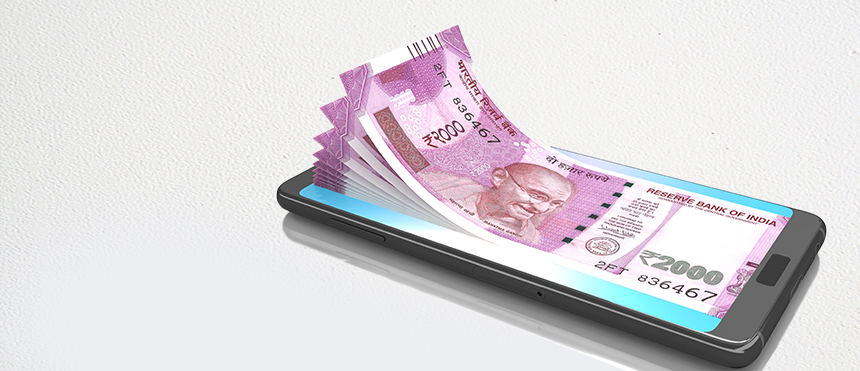Benefits of Digital Lending over Traditional Mode
In the current scenario, when prospective borrowers are spoilt for a choice with offers for loans at the swipe of a finger, a question comes to mind: which is a better, availing loan through digital mode or traditional one? If we do a dispassionate analysis of the advantages and disadvantages of both the modes, it will be clear as to which mode of lending is superior and why.
To begin with, let us start with the first important criteria, i.e., convenience. In the traditional mode, the applicant has to visit the office of the loan provider (Bank/FI) to apply for loan and submit the relevant documents. This means a drain on one of the most precious resources of the applicant, i.e., time. Further, it may also mean some money spent on travel. Digital mode of loan application is far superior in this respect. It not only saves unnecessary time and money spent in visiting the office of the loan provider during business hours, but provides the flexibility of applying for the loan from anywhere, at any time and just with a touch.
We now come to second important criteria, i.e., documentation formalities. In the traditional mode, filling up the application form is the first hurdle, which means filling up correctly without any alterations is no mean task. Further, one has to arrange photo copies of the relevant identity and address proof documents besides taking the originals along with him for verification by the officials of the loan provider. Next comes executing the loan agreement. All these hassles are very well addressed in the digital mode. Filling up the application is very easy besides doing corrections, if any. Document submission is ultra easy, with either taking a photo of the required one instantly on Mobile Camera or downloading from 'DigiLocker'. One need not spend on making photo copies or even printing own photo. This is addressed very efficiently in digital mode with the option of either taking a live photo or recording a small video of oneself. Similarly, document execution is faster, more authentic in digital mode.
The next important criteria are sanction and disbursement of the loan amount. Even here, the digital mode scores extremely well as compared to traditional mode. Earlier, it used to take 3 to 5 weeks for loan disbursement through traditional mode. Although traditional lenders have devised ways to fast track their entire process, manual interventions are still needed to ensure that the timelines are adhered to. Digital lending has revolutionised the shortening of the entire process, right from application to loan disbursement, to hardly a few minutes. The only bottleneck in this regard is that legislations and payments system should keep in pace with the changes being brought about by the Fintech industry. This will ensure that end customers get the real benefit of digitalisation.
Last but not the least important, is the criteria of transparency. Digital mode scores well as compared to traditional mode, here as well. The customer can view his eligibility for loan, maximum amount that can be availed, rate of interest applicable on the loan product, EMI amount, loan sanction letter, loan agreement, statement of account, on his own, anytime, anywhere, without the need to approach any one. Grievance redressal mechanism is also very robust in digital mode.
To sum up, we can say digital lending method has provided access to instant, automated, remote credit to millions of borrowers who might have been excluded from mainstream financial players, unless this transition from traditional mode to digital mode would have happened. So “Go Digital” should be the motto of all borrowers.
"(Dr. Manas Ranjan Pani, is a banking and finance sector professional with more than 3 decades of experience in Retail Banking, Corporate Banking, SME, Stress Assets Management, Financial Inclusion, Banking Operations, Risk Management, Training & Development. Presently, he is a Visiting Professor in Xavier School of Commerce, Xavier University, Bhuaneswar, Odisha , India.)"
